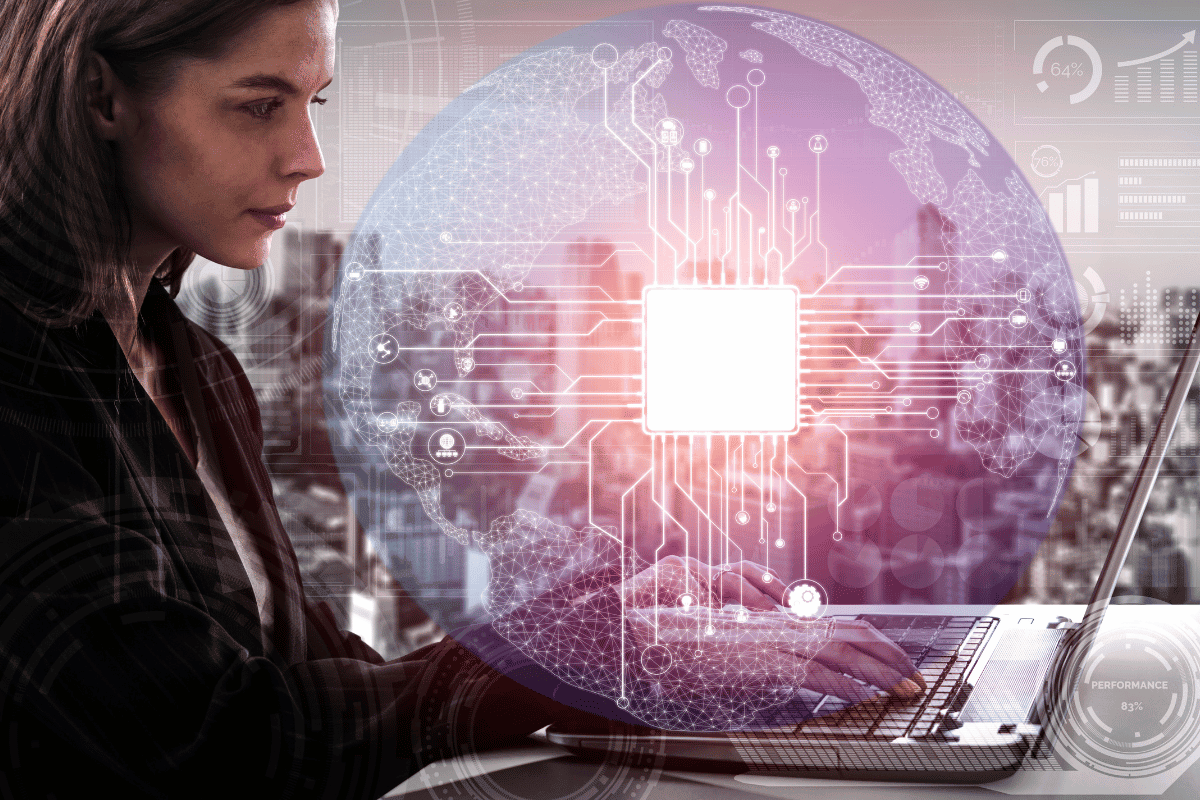Artificial Intelligence vs Generative AI
Artificial intelligence (AI) has become a buzzword in recent years, sparking interest and curiosity in various industries. From self-driving cars to virtual assistants, AI has the potential to revolutionize the way we live and work. However, within the sphere of AI, there is a specific subset called Generative AI that is gaining attention for its unique capabilities. In this article, we will explore the differences between Artificial Intelligence and Generative AI, their applications, and the potential they hold for the future.
Overview of Artificial Intelligence
Definition of Artificial Intelligence
Artificial Intelligence refers to the simulation of human intelligence in machines that are programmed to think and learn like humans. It is a broad field that encompasses various approaches and techniques to enable machines to perform tasks that typically require human intelligence. AI aims to create intelligent systems that can perceive, reason, learn, and solve problems.
Traditional AI Approaches
Traditional AI approaches generally rely on predefined rules and algorithms to process data and make decisions. These algorithms are designed by human experts and require a substantial amount of domain knowledge. Traditional AI models often excel in specific tasks but may struggle with complex and ambiguous situations.
Machine Learning in AI
Machine Learning (ML) is a subfield of AI that focuses on developing algorithms that can learn from data and improve their performance over time. ML algorithms use mathematical models to analyze patterns, make predictions, and generate insights without being explicitly programmed. This approach allows AI systems to adapt and improve based on new information.
Understanding Generative AI
Definition of Generative AI
Generative AI is a subset of AI that focuses on creating new content, rather than just analyzing existing data. It uses deep learning algorithms to generate new, original content, such as text, images, or even music. Generative AI models are trained on large amounts of data and can produce highly realistic and coherent outputs.
How Generative AI Differs from Traditional AI
While traditional AI focuses on solving specific problems and making predictions, Generative AI goes beyond that by using machine learning algorithms to generate new content. Instead of relying on predefined rules and algorithms, Generative AI models are capable of learning patterns from data and using that knowledge to create something entirely new.
Predictive Capabilities of Generative AI
Generative AI models, like ChatGPT developed by OpenAI, have demonstrated remarkable predictive capabilities. These models use a form of AI called Natural Language Processing (NLP) to understand and generate human-like text. ChatGPT, for example, can carry on conversations, answer questions, and even create engaging stories.
Applications of Generative AI
AI Chatbots and Virtual Assistants
One of the most notable applications of Generative AI is in the development of AI-powered chatbots and virtual assistants. These systems can understand and respond to user inputs in a conversational manner. Generative AI enables chatbots to generate human-like responses, improving the overall user experience.
Use Cases for Generative AI
Generative AI has a wide range of use cases across various industries. For example, it can be used in content creation, where AI algorithms generate blog posts, social media captions, and even entire articles. It can also be applied in the gaming industry to create immersive virtual worlds, as well as in the design field to generate unique graphics and artwork.
Examples of Generative AI in Action
One notable example of Generative AI in action is the use of deep learning techniques to generate realistic images. This has applications in computer graphics, where AI algorithms can produce lifelike characters and environments. Additionally, Generative AI is at the core of recommendation systems that suggest personalized content, such as movies or products, based on user preferences.
The Power and Potential of Generative AI
The Benefits of Generative AI Technology
Generative AI offers several benefits compared to other AI models. Its ability to generate new content opens up possibilities for creativity and innovation. It can help artists, writers, and designers explore new ideas and push boundaries. Additionally, Generative AI can automate repetitive content-generation tasks, saving time and effort.
Exploring the Future of Generative AI
The future of Generative AI holds immense potential. As AI algorithms and infrastructure continue to advance, we can expect more sophisticated and realistic outputs. These advancements will drive innovation across various industries, from entertainment to healthcare. Generative AI has the power to revolutionize the way we create and consume content.
The Impact of Generative AI on Various Industries
Generative AI has the potential to significantly impact various industries. Its applications in content creation and design can enhance creativity and productivity. In healthcare, Generative AI can help generate personalized treatment plans and predict patient outcomes. In the financial sector, it can assist in fraud detection and risk assessment. The possibilities are vast.
Generative AI vs Other AI Approaches
Comparison of Generative AI and Predictive AI
Generative AI and predictive AI are two distinct approaches within the AI landscape. While predictive AI focuses on making accurate predictions based on existing data, generative AI goes beyond prediction by creating new content. Generative AI leverages deep learning algorithms to generate outputs that resemble human intelligence in a creative and original way.
Generative AI’s Advantages over Other AI Models
Generative AI models have several advantages over other AI approaches. They excel at tasks that involve creativity and innovation. Generative AI is capable of generating unique and original content, which is particularly useful in fields like art, design, and content creation. Additionally, Generative AI models can adapt to new tasks and generate outputs in different domains.
Potential Use of Generative AI in Combination with Other Techniques
Generative AI can be used in combination with other AI techniques to enhance their capabilities. For example, Generative Adversarial Networks (GANs) combine generative models with discriminative models to improve the quality of generated content. This combination can lead to more realistic and accurate outputs.
Conclusion
Summary of the Differences between Artificial Intelligence and Generative AI
Artificial Intelligence is a broad field that encompasses various approaches, including Generative AI. While traditional AI focuses on solving problems and making predictions, Generative AI goes beyond that by using deep learning techniques to generate new and original content.
The Importance of Generative AI in Advancing AI Technology
Generative AI plays a crucial role in advancing AI technology. It pushes the boundaries of what AI can achieve by enabling machines to generate creative and original content. Generative AI fosters innovation and opens up new possibilities in fields such as art, design, and content creation.
The Future Possibilities with Generative AI
The future possibilities with Generative AI are vast and exciting. As the technology continues to evolve, we can expect more realistic and sophisticated outputs. Generative AI has the potential to transform various industries and revolutionize the way we create, consume, and interact with content.
Frequently Asked Questions:
Q: What is the difference between artificial intelligence and generative AI?
A: Artificial intelligence (AI) is a broad term that encompasses different technologies and approaches aimed at enabling machines to mimic human intelligence. Generative AI, on the other hand, is a subset of AI that specifically focuses on using AI models to generate new content.
Q: How does machine learning relate to generative AI?
A: Machine learning is a key component of generative AI. It involves training AI models using large amounts of data to learn patterns and make predictions. Generative AI leverages machine learning techniques to generate new content based on the patterns it has learned.
Q: What is ChatGPT?
A: ChatGPT is an example of a generative AI model. It is a language model developed by OpenAI that can generate human-like text responses in a conversational manner. It has been trained on diverse internet text and is capable of generating interesting and coherent responses.
Q: How can generative AI be used in real-world scenarios?
A: Generative AI has various use cases across different industries. It can be used to create personalized recommendations, generate product descriptions, assist in content creation, and even power AI chatbots for customer support.
Q: How does generative AI work?
A: Generative AI works by utilizing AI models, such as neural networks, to generate new content. These models are trained on large datasets and learn patterns in the data. When given a certain input, the generative AI model generates new output that is similar to the patterns it has learned.
Q: What is the difference between generative AI and predictive AI?
A: Generative AI focuses on generating new content or data, while predictive AI is more concerned with making predictions or forecasts based on the available data. Both approaches have their own unique applications and can be used together in certain scenarios.
Q: Can you provide examples of generative AI applications?
A: Some examples of generative AI applications include generating realistic images, creating music compositions, generating natural language text, and even designing virtual characters or landscapes.
Q: What are the benefits of using generative AI?
A: Generative AI has the potential to enhance creativity, automate content generation, enable personalized experiences, and aid in solving complex problems. It can also save time and resources by automating tasks that would otherwise require human effort.
Q: How does generative AI compare to traditional AI?
A: Generative AI differs from traditional AI in the sense that it focuses on generating new content rather than solely relying on pre-programmed rules or known patterns. It leverages large language models and data-driven approaches to generate creative and contextually relevant content.
Q: What are some tools or platforms that utilize generative AI?
A: Some popular tools or platforms that utilize generative AI include OpenAI’s GPT-3, ChatGPT, DeepArt.io for generating artistic content, and Runway ML for creative AI experimentation.






